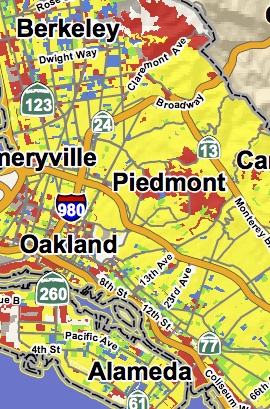
Progressive broadband policy rates an A, nimbys fail.
I was one of the speakers at this week’s Eastern Sierra Connect Regional Broadband Consortium annual forum in Bishop, California. My presentation built on a talk I gave earlier this year at the Urban Land Institute’s spring meeting in San Diego.
Then, I spoke about five broadband trends that are shaping communities: the growing value of conduit, the growth of competition at the local level, the role of local government in building middle mile facilities, the coming explosion in wireless capacity and the way broadband access is changing life and work styles.
It’s not enough to just identify trends, though. So this time, I went into more detail about policies and initiatives that local governments and groups have implemented to take maximum advantage of the benefits.
Top of the list is building a reliable, online inventory of available assets, particularly conduit. The City of Watsonville is saving more than a million dollars on a municipal dark fiber network because it knows where conduit has already been installed, leaving only connecting segments to be built.
Giving any interested utility or local agency the opportunity to put conduit in the ground anytime a street is cut into is another. Key to these efforts is engaging and empowering public works people – experience shows that when they take ownership of a broadband project, progress is quickly made.
On the wireless side, intelligent planning and judicious encouragement of wireless facilities will prepare cities for the predicted 1000X boom in capacity as we move towards a 5G world in the next decade. And agencies can lean in to connected, public transportation-centric lifestyles by moving more government functions and teleworkers online and opening up access to data .
